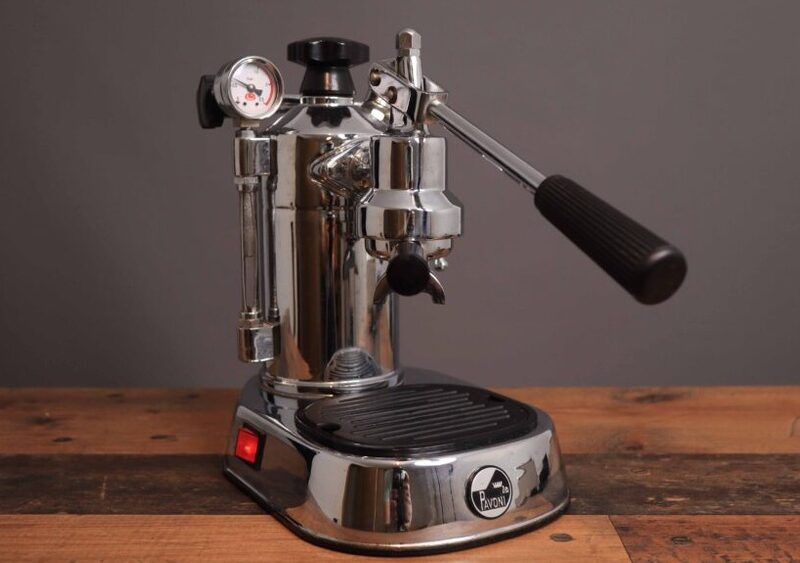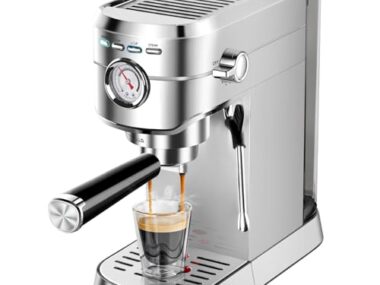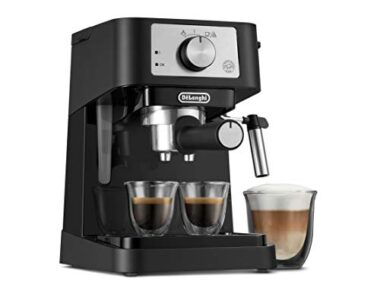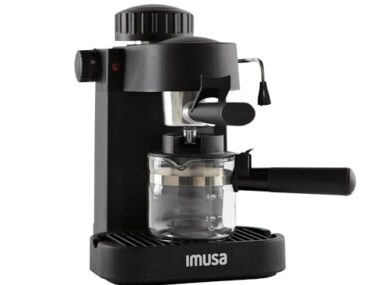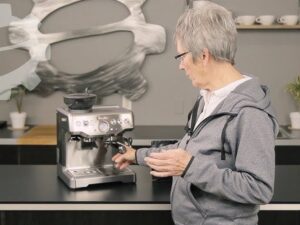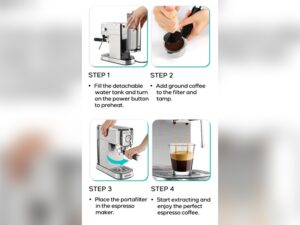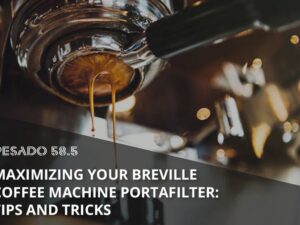Are you concerned about the plastic parts in your espresso machine? You’re not alone. That’s why many coffee lovers ask, “Which Espresso Machine Has No Plastic?” to brew safer, healthier coffee.
Many coffee lovers worry about plastic touching hot water and coffee, fearing it might affect the taste or even release unwanted chemicals. If you want to enjoy your espresso with peace of mind, knowing exactly what materials your machine uses is crucial.
In this guide, you’ll discover which espresso machines have little to no plastic in contact with hot liquids, helping you make a safer and healthier choice for your daily brew. Keep reading to find the perfect plastic-free espresso machine that suits your taste and lifestyle.
Plastic In Espresso Machines
Plastic is commonly used in many espresso machines. It helps keep costs low and parts lightweight. Yet, plastic parts touch water and hot coffee during brewing. This raises questions about safety and taste. Understanding where plastic appears in machines helps choose better options.
Common Plastic Parts
Water tanks often use plastic for clear visibility and light weight. Internal tubing and gaskets may be made of plastic or Teflon. Some portafilters include plastic components. Pumps and steam valves can also contain plastic parts. These pieces contact hot water and espresso during use.
Health Concerns
Plastic parts heated by water may release chemicals. Some plastics contain BPA or other additives. These chemicals can leach into coffee. People worry about long-term health effects from these substances. Choosing machines with fewer plastic parts may reduce this risk.
Microplastics Risk
Microplastics are tiny plastic particles. Heat and pressure inside machines can break down plastic parts. These microplastics may enter the coffee. The health impact of drinking microplastics is still studied. Reducing plastic contact with hot liquids lowers microplastic exposure.
Materials To Look For
Choosing an espresso machine without plastic parts means focusing on the materials used in its construction. Certain materials offer durability and a pure taste without the risk of plastic contact. Knowing which materials to prefer helps find a machine that meets these needs. These materials must handle heat, water, and pressure safely.
Stainless Steel Components
Stainless steel is a top choice for espresso machines. It resists rust and corrosion while being easy to clean. Many machines use stainless steel for the boiler, portafilter, and housing. This metal does not leach chemicals into your coffee. It also keeps the machine sturdy and long-lasting.
Brass And Metal Parts
Brass is common for internal parts like valves and boilers. It handles heat well and offers excellent durability. Metal components, including copper or aluminum, often appear in heating elements. These metals ensure even heat distribution. They provide a pure brewing process without plastic contact.
Glass And Ceramic Elements
Glass and ceramic parts add safety and style. Some machines use glass for water reservoirs or coffee pots. Ceramic is popular for cups and sometimes the group head. Both materials stay neutral and do not affect flavor. They are easy to clean and avoid plastic exposure.
Top Plastic-free Espresso Machines
Choosing an espresso machine without plastic parts improves taste and health safety. Many plastic-free machines use stainless steel, brass, or glass components. These materials resist heat and avoid chemical leaching. Coffee lovers value durability and clean brewing with fewer plastics.
This section highlights top plastic-free espresso machines. It covers high-end durable models, budget-friendly options, and manual or semi-automatic picks. Each offers quality without plastic in contact with hot water or coffee.
High-end Durable Models
Premium machines often feature full stainless steel bodies and internal parts. Models from brands like La Marzocco and Rocket Espresso use brass boilers and steel piping. These materials last longer and keep coffee pure. They have minimal or no plastic in water paths or brewing groups.
Such machines provide consistent pressure and temperature control. They suit serious home baristas and small cafes. Although pricier, their build quality justifies the investment. Expect robust construction and easy maintenance with no plastic taste concerns.
Budget-friendly Options
Some affordable machines avoid plastic contact with hot liquids by using metal parts for critical areas. Brands like Flair Espresso and ROK offer budget-friendly manual espresso makers. Their design focuses on metal levers, stainless steel filters, and glass water reservoirs.
These options require more user effort but deliver quality espresso without plastic risks. They suit those who want eco-friendly coffee tools on a limited budget. The simple mechanics also reduce repair costs and extend machine life.
Manual And Semi-automatic Picks
Manual and semi-automatic espresso machines often use fewer plastic parts. Users control extraction manually, allowing plastic-free water and coffee contact surfaces. Machines like the Elektra Micro Casa and La Pavoni Europiccola feature polished brass and stainless steel bodies.
These models combine classic style with modern durability. They provide a hands-on brewing experience and reduce plastic exposure. Semi-automatics may have minor plastic parts outside the brewing path. Manual machines are ideal for users who enjoy crafting espresso step by step.

Credit: www.youtube.com
Maintenance Tips For Longevity
Maintaining an espresso machine without plastic parts ensures it lasts longer and stays safe. Proper care keeps metal and glass components in top shape. This section covers key tips for cleaning, avoiding plastic contact, and replacing parts.
Cleaning Without Damage
Use gentle cleaning tools like soft cloths or brushes. Avoid abrasive sponges that scratch metal surfaces. Clean the machine after each use to prevent coffee buildup. Descale regularly with vinegar or citric acid to remove mineral deposits. Never use harsh chemicals that can corrode metal parts.
Avoiding Plastic Contamination
Choose cleaning products free from plastic microbeads or particles. Use glass or stainless steel containers for water and cleaning solutions. Avoid using plastic utensils or brushes inside the machine. Check hoses and seals for hidden plastic parts and replace them with metal alternatives. Keep the machine away from plastic items to reduce contact.
Replacing Parts Safely
Always use manufacturer-approved metal or glass parts for replacements. Avoid third-party plastic components that may wear out quickly. Install parts carefully to prevent damage or leaks. Regularly inspect seals and gaskets for wear; replace with non-plastic versions if possible. Store spare parts in a dry, clean place to maintain their quality.
Buyer’s Guide
Choosing an espresso machine without plastic parts can be challenging. This buyer’s guide helps you ask the right questions and spot hidden plastics. It also explains the importance of warranty and support for your purchase. Use this guide to find a machine that suits your needs and avoids unwanted plastic.
What To Ask Sellers
Ask if the machine uses any plastic parts in contact with water or coffee. Request details about the water tank, internal tubing, and portafilter materials. Confirm if the heating elements have plastic coatings or gaskets. Sellers should provide clear information on all materials touching hot liquids.
Checking For Hidden Plastics
Look beyond the exterior to find hidden plastic components. Many machines have plastic inside tubing, valves, or seals. Examine product manuals or online reviews for mentions of plastic parts. Some brands use stainless steel or brass for internal parts to avoid plastic exposure.
Warranty And Support
Choose brands offering strong warranty coverage and reliable customer support. This helps if you find plastic parts you want replaced or upgraded. Good support can assist with maintenance and part replacement. Verify warranty terms before buying to avoid future issues.

Credit: www.youtube.com
Eco-friendly Coffee Habits
Eco-friendly coffee habits help reduce your environmental impact. Choosing the right espresso machine is just the start. The way you brew, filter, and source beans also matters. Small changes can lead to big savings for the planet. Here are simple steps to make your coffee routine greener.
Using Reusable Filters
Reusable filters cut down on single-use waste. Metal or cloth filters last for years. They do not add plastic to your coffee. These filters also let more oils pass through. Your coffee tastes richer and fuller. Cleaning reusable filters is easy and quick.
Sourcing Sustainable Beans
Choose coffee beans from farms with eco-friendly practices. Look for organic or fair-trade labels. These farms avoid harmful chemicals and protect natural habitats. Beans grown this way support farmers and the environment. Your coffee becomes a force for good with every cup.
Reducing Waste
Waste reduction starts with mindful coffee habits. Use leftover grounds as garden fertilizer or compost. Skip disposable cups and carry your own mug. Buy coffee in bulk to reduce packaging. Each small effort lowers your coffee’s footprint.

Credit: mywirsh.com
Frequently Asked Questions
Is Breville Made Of Plastic?
Breville appliances include plastic parts like water tanks, tubing, gaskets, and some portafilter components. Stainless steel covers many external surfaces.
Why Choose A Plastic Free Espresso Machine?
Choosing a plastic-free espresso machine reduces exposure to microplastics and toxins. It ensures safer, cleaner coffee and promotes environmental sustainability.
Do Espresso Machines Have Microplastics?
Espresso machines often contain plastic parts like water tanks and tubing. Some plastics may release microplastics under heat. Choosing models with stainless steel or brass components reduces this risk. Regular cleaning helps maintain safety. Completely plastic-free machines are rare but available for those concerned.
Which Espresso Machines Have No Plastic Parts?
Fully plastic-free espresso machines are rare. Look for models with stainless steel or brass boilers, metal water tanks, and minimal plastic tubing. Manual lever machines often use fewer plastics. Always check manufacturer specs to confirm materials used in contact with hot water or coffee.
Conclusion
Choosing an espresso machine with no plastic parts can improve your coffee’s purity. Stainless steel and brass parts reduce plastic contact with hot water. Such machines often last longer and feel sturdier. They also lower concerns about microplastics in your drink.
Although fully plastic-free machines are rare, some models minimize plastic use. Prioritize quality materials and easy maintenance for the best experience. Enjoy rich espresso without worrying about plastic components. Your perfect, plastic-free coffee moment is possible with the right choice.
